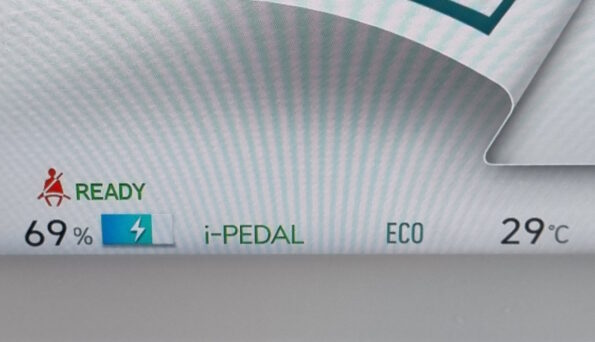Electric cars, or EVs, use magnetic resistance to recapture energy for the batteries when the car is braking or coasting. There are usually several levels which range from almost no braking to what feels like pushing the brake pedal to slow down in normal driving. While this regenerative braking doesn’t capture a massive amount of power (a few percent at best), it can mean a few extra kilometres per charge.
One-pedal driving is an extension of this feature where the brake regeneration is set at enough to bring the vehicle to a stop within the requirements of the majority of day-to-day driving. In theory, you would rarely need to touch the brake pedal as simply releasing the accelerator pedal would provide enough braking.
In a Hyundai, this is called i-Pedal and is shown on the dashboard.

Comparing this to a car with an internal combustion engine (ICE), it would be like changing down into a very low gear to get much more engine braking, but with one-pedal driving, it will bring you to a complete stop, including putting the brake lights on so that vehicles following you know that you are slowing down.
What are the benefits of one-pedal driving?
It is set to recapture as much braking energy as possible all of the time (of course, more braking energy can be recaptured if you do actually need to apply the brakes)
Because the brakes aren’t being used, there is less wear and tear on them, and less brake dust polluting the environment
There is no time between when your foot leaves the accelerator to when you start to brake – it’s instant; with regular braking, your foot must move across to the brake pedal. This could be advantageous if you have to perform an emergency stop as you’ll get a fraction of a second of braking before you apply the main brake pedal.
What are the disadvantages of one-pedal driving?
It takes some getting used to in order to provide a smooth drive for your passengers
It may reduce your skills and reaction times when you actually need to brake. While there have been no studies on this, one could argue that repeatedly using the one-pedal brake as your braking method may blunt your reaction to press the actual brake pedal when required. If you have autonomous emergency braking, this is ultimately not such a danger.
It may actually use more fuel initially. When drivers first start using it, there’s a tendency to over-brake, which then requires acceleration to correct. As the energy recaptured from braking is much less than is required for acceleration, the one-pedal driving option could be less efficient when the driver is not skilled enough to use it.
